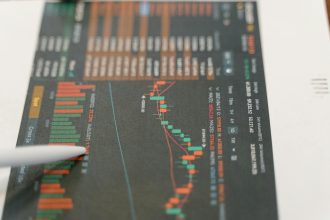Unlocking the Power of Recurrent Neural Networks (RNNs)
Imagine a machine that can remember the past to understand the present and predict the future. This isn’t science fiction; it’s the incredible capability of Recurrent Neural Networks (RNNs). In the rapidly evolving landscape of artificial intelligence, RNNs stand out for their unique ability to handle sequential data, a characteristic that has revolutionized how we interact with technology. Unlike traditional neural networks, which process information in a strictly linear fashion, RNNs possess a form of “memory,” allowing them to consider previous inputs when processing current ones. This fundamental difference unlocks a universe of possibilities, from understanding the nuances of human language to forecasting complex market trends.
For years, the development of AI has been a quest to mimic human cognitive abilities. While early models excelled at tasks with discrete inputs, they struggled with the fluid, continuous nature of real-world data like speech, text, and time-series information. This is where Recurrent Neural Networks stepped onto the stage, offering a paradigm shift in how AI tackles sequences. Their inherent design allows them to learn patterns and dependencies over time, making them indispensable tools for a vast array of applications that were once beyond the reach of artificial intelligence. Let’s dive deep into what makes these networks so special and why they continue to be a cornerstone of modern AI research and development.
What Exactly are Recurrent Neural Networks?
At its core, a Recurrent Neural Network is a type of artificial neural network designed to recognize patterns in sequences of data. What sets them apart is their internal “memory” or “state.” This state is updated at each step of the sequence, allowing the network to retain information from previous inputs and use it to inform the processing of current and future inputs. Think of it like reading a book; you don’t just process each word in isolation. Your understanding of a sentence is heavily influenced by the sentences that came before it, and your overall comprehension of the chapter is built upon the entire narrative.
This “recurrent” nature means that the output of the network at a given time step is not only dependent on the current input but also on the hidden state from the previous time step. This feedback loop is the key to their ability to model temporal dependencies. In essence, RNNs are designed to learn from experience, much like humans do. They can process variable-length inputs and generate variable-length outputs, making them incredibly versatile for tasks involving sequences.
The Architecture of Memory: How RNNs Work
The fundamental building block of an RNN is a recurrent unit, often a simple neural network layer. At each time step, this unit receives an input and the hidden state from the previous time step. It then computes a new hidden state and an output. The same set of weights is used across all time steps, which is a crucial aspect of their efficiency and ability to generalize patterns over time.
The Core Components
- Input Layer: Receives the data at the current time step.
- Hidden Layer: This is where the “memory” resides. It takes the current input and the previous hidden state to compute the new hidden state. The mathematical operation typically involves a weighted sum of the input and the previous hidden state, followed by an activation function.
- Output Layer: Produces the output for the current time step, which can be a prediction, a classification, or another form of processed data.
The Flow of Information
The magic happens through the recurrent connection. The hidden state at time t (ht) is a function of the input at time t (xt) and the hidden state at time t-1 (ht-1). Mathematically, this can be represented as:
ht = f(Whh * ht-1 + Wxh * xt + bh)
Where:
fis an activation function (e.g., tanh, ReLU).Whhis the weight matrix for the recurrent connection.Wxhis the weight matrix for the input connection.bhis the bias vector for the hidden layer.
The output (yt) at time t is then typically computed based on the current hidden state:
yt = g(Why * ht + by)
Where g is another activation function, Why is the weight matrix for the output layer, and by is the bias vector.
Why are RNNs So Powerful for Sequential Data?
The ability of Recurrent Neural Networks to maintain a state across time steps makes them exceptionally well-suited for tasks where the order of information matters. This is a fundamental distinction from feedforward neural networks, which treat each input independently. RNNs can capture long-range dependencies, meaning they can learn relationships between data points that are far apart in a sequence. This capability is crucial for understanding context and making accurate predictions.
Consider natural language processing (NLP). The meaning of a word often depends on the words that precede it. An RNN can process a sentence word by word, building up an understanding of the context, which allows it to perform tasks like translation, sentiment analysis, and text generation with remarkable accuracy. Similarly, in financial markets, past stock prices can influence future movements, making RNNs valuable for predictive modeling.
Key Advantages:
- Handling Sequential Data: Their inherent design is optimized for data where order is significant, such as text, audio, and time series.
- Memory: The hidden state allows them to retain information from past inputs, providing context for current processing.
- Variable-Length Inputs/Outputs: RNNs can handle sequences of different lengths, making them flexible for real-world applications.
- Parameter Sharing: Using the same weights across all time steps makes them more efficient and less prone to overfitting compared to models that would have to learn unique parameters for each position in a sequence.
Applications That Shine with RNNs
The versatility of Recurrent Neural Networks has led to their widespread adoption across numerous industries. Their ability to understand and generate sequential data has unlocked capabilities that were previously unimaginable.
Transforming Industries:
- Natural Language Processing (NLP): Machine translation, sentiment analysis, text summarization, chatbots, and speech recognition are all heavily reliant on RNNs.
- Speech Recognition: Converting spoken language into text requires understanding the temporal sequence of sounds.
- Time Series Analysis: Predicting stock prices, weather patterns, and energy consumption are prime examples where RNNs excel.
- Video Analysis: Understanding the sequence of frames in a video to recognize actions or predict future events.
- Music Generation: Composing new melodies by learning patterns from existing musical sequences.
- Handwriting Recognition: Deciphering handwritten text by analyzing the stroke sequences.
The impact of RNNs on these fields has been profound, leading to more intelligent, responsive, and personalized user experiences.
Challenges and Evolution: Beyond Basic RNNs
While powerful, basic Recurrent Neural Networks can struggle with very long sequences. This is primarily due to the vanishing and exploding gradient problems during training. The vanishing gradient problem occurs when gradients become very small during backpropagation, making it difficult for the network to learn long-range dependencies. Conversely, exploding gradients can cause the network weights to become unstable. To address these limitations, more advanced architectures have been developed.
The most notable advancements include Long Short-Term Memory (LSTM) networks and Gated Recurrent Units (GRUs). These architectures introduce gating mechanisms that allow the network to better control the flow of information, selectively remembering or forgetting data over long periods. LSTMs and GRUs have largely supplanted basic RNNs in many complex applications due to their superior performance in handling long sequences.
For a deeper dive into the intricacies of neural network architectures, exploring resources like DeepLearning.AI can provide invaluable insights into the latest research and practical implementations.
The Evolution of Recurrent Architectures:
- Long Short-Term Memory (LSTM): Features a sophisticated gating mechanism (input, forget, and output gates) to regulate information flow and combat vanishing gradients.
- Gated Recurrent Unit (GRU): A simplified version of LSTM with fewer parameters, often achieving comparable performance while being more computationally efficient.
These advancements highlight the continuous innovation in the field of AI, pushing the boundaries of what’s possible with sequential data processing. Understanding the evolution from basic RNNs to LSTMs and GRUs is key to appreciating the full power of recurrent architectures.
The Future of Sequential Data Processing
The journey of Recurrent Neural Networks is far from over. While Transformer architectures have gained significant traction, particularly in NLP, RNNs and their variants continue to be relevant and highly effective for many tasks. The ongoing research into more efficient training methods, novel architectures, and hybrid models promises to further enhance their capabilities. As datasets grow larger and more complex, the need for models that can effectively process sequential information will only increase.
The ability of these networks to learn from the temporal dynamics of data means they will remain a critical tool in the AI arsenal for years to come. Whether it’s understanding the subtle emotions in a piece of music or predicting the next word in a sentence, RNNs provide the foundation for intelligent systems that can truly grasp the flow of information. The continuous refinement of these models ensures that AI will keep advancing, offering ever more sophisticated solutions to complex problems.







